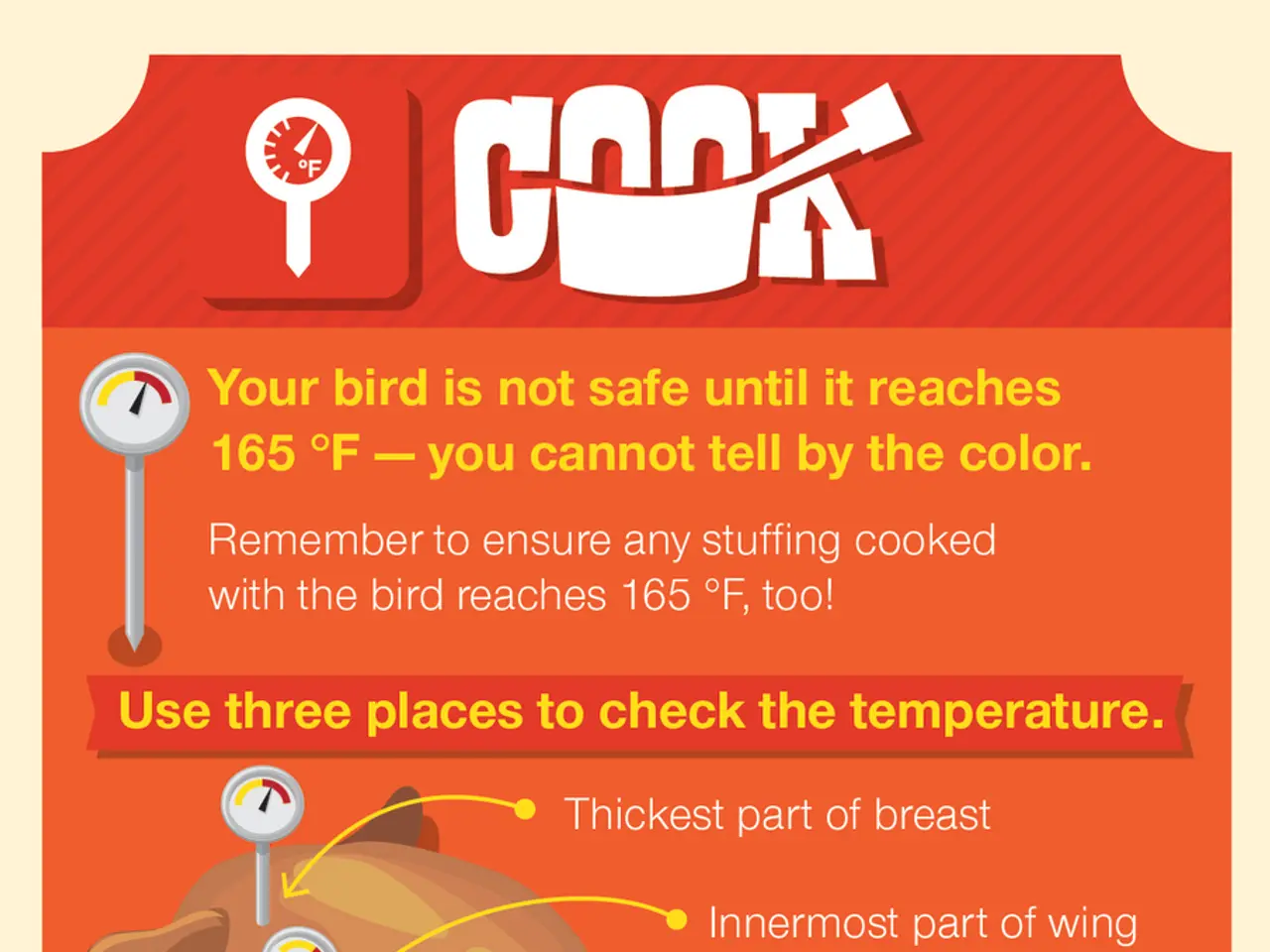Intensified monitoring of avian H5N1 flu after a current outbreak in Cambodia by the authorities
Thailand Enhances Surveillance and Preventive Measures Against Avian Influenza Outbreak in Neighboring Cambodia
Thailand is taking proactive steps to prevent the spread of the H5N1 avian influenza virus from Cambodia, where an outbreak has been reported in Siem Reap. The Department of Disease Control (DDC) and the Department of Livestock Development (DLD) have intensified surveillance and preventive measures, particularly in border provinces such as Sa Kaeo and Buri Ram.
The DLD has imposed a 90-day ban on poultry imports and transit from Cambodia, covering chickens, ducks, geese, swans, their eggs, and breeding sperm. This move aims to prevent cross-border transmission of the H5N1 virus, enacted under the Animal Disease Control Act after the World Organisation for Animal Health confirmed the outbreak in Cambodia [1].
On the farm level, Thailand has stepped up surveillance and monitoring in border provinces. Enhanced inspections are being carried out in Sa Kaeo and Buri Ram to detect early signs of disease and prevent local outbreaks [2][3]. Poultry farmers in these areas are urged to increase biosecurity measures such as weekly cleaning and disinfection, restricting access to farms, disinfecting vehicles entering farms, and close observation of poultry health [2].
Public health authorities have raised the alert level, promoting community cooperation by encouraging the public and farmers to promptly report sick or dead birds to local livestock officers or health volunteers for immediate response [2]. This multisectoral approach aims to minimize the risk of H5N1 virus spillover into Thailand’s poultry industry and human population.
The government is also encouraging all chicken farms in border provinces to implement Good Agricultural Practices (GAP) and sound farming management. Vehicles entering poultry farms in border provinces must be sprayed with disinfectants [3]. Despite the current risk being assessed as low, the government is taking no chances and ramping up monitoring efforts to prevent the spread of the H5N1 virus into its border provinces [3].
The H5N1 sub-strain Clade 2.3.2.1e is the strain causing the outbreak in Siem Reap, Cambodia. From 2023 to 2025, Cambodia has reported 26 human cases of H5N1 infection, with 11 deaths. In 2025 alone, 13 human cases of H5N1 infection have been reported, resulting in six fatalities. Siem Reap, Cambodia, borders the provinces of Oddar Meanchey to the north and Banteay Meanchey to the west, both of which share borders with Thailand's Sa Kaeo and Buri Ram provinces [4].
The government is urging chicken farmers to monitor their flocks closely and report any suspicious deaths to the district livestock office. This vigilance is crucial in controlling the spread of the disease and safeguarding Thailand's poultry industry and public health.
- The H5N1 avian influenza virus poses a threat to Thailand's business sector, particularly the poultry industry and related food-and-drink establishments.
- In light of the outbreak in Cambodia, Thailand's economy may face potential disruptions due to the impact on agriculture and trade.
- The government emphasizes the importance of adhering to health-and-wellness practices to mitigate the spread of the H5N1 virus.
- Fitness-and-exercise routines, mental-health awareness, and proper nutrition are key components in building a robust immune system as a preventive measure against chronic-diseases like the H5N1 virus.
- Government officials are collaborating with international organizations, such as the World Organisation for Animal Health, to gather data-and-cloud-computing on the latest developments and preventive measures.
- The global economy, political-climate, and even cultural sentiments could be influenced by the management and resolution of the avian influenza outbreak.
- In the realm of science, researchers are dedicated to understanding the viral behavior, origin, and development of effective medical-conditions to treat the H5N1 virus.
- With the ongoing H5N1 outbreak, health-insurance providers might be inclined to re-evaluate coverage for medical-treatments related to respiratory-conditions and chronic-diseases.
- The government encourages people to maintain a balanced lifestyle, which includes focus on personal-finance, home-and-garden management, and mindful consumerism in shopping activities.
- Finance experts suggest preparing for uncertainty by diversifying investments in areas such as technology, real estate, and alternative assets to safeguard against economic slowdowns or instability.
- Uncertainties related to the avian influenza outbreak could negatively impact tourism, travel, and sports-related industries, particularly in regions with close proximity to outbreak locations.
- Sporting events such as football, baseball, hockey, golf, basketball, racing, tennis, and mixed-martial-arts could be affected by travel restrictions or crowd size limitations.
- On the positive side, the sports-analysis sector may experience growth due to increased interest in understanding the impact of the virus on athletes and teams.
- The H5N1 outbreak has the potential to highlight the importance of relationships, community cooperation, and solidarity in addressing complex health crises.
- Technology advancements, such as in the fields of data-and-cloud-computing, could play a crucial role in monitoring the spread of the virus and predicting its potential impact.
- Governments and nongovernmental organizations could collaborate in raising awareness on the importance of food safety, focusing on proper food-preparation and hygiene to reduce the risk of virus transmission through food-and-drink products.
- As the world continues to grapple with numerous health threats, the need for sustainable healthcare systems and universal access to medical care becomes increasingly apparent.
- Ultimately, the long-term effects of the H5N1 outbreak on Thailand's health, business, and culture will depend on the success of preventive measures, international cooperation, and resilience in the face of uncertainty.




